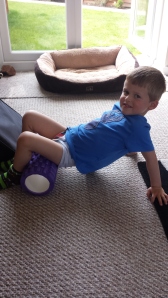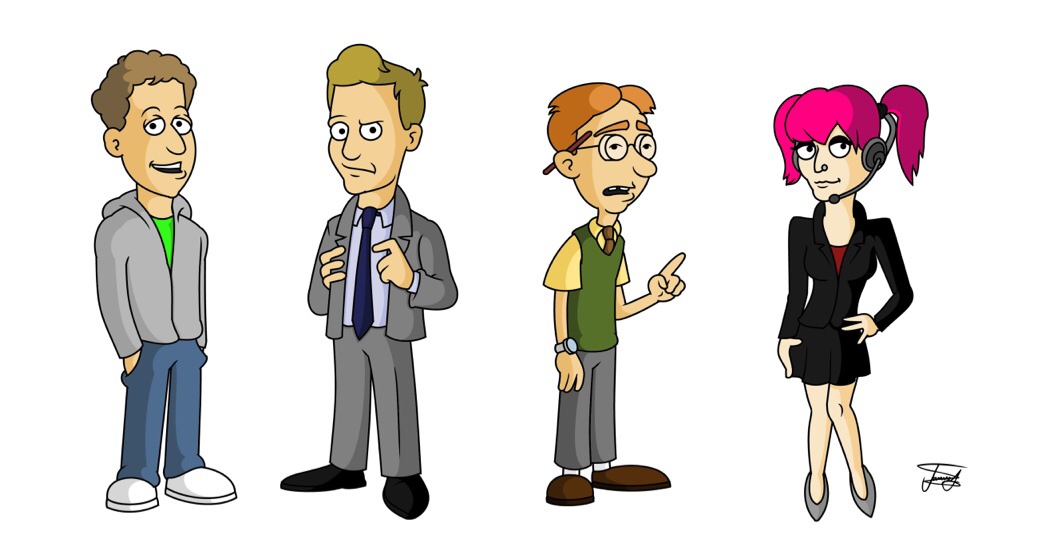A fascinating and thought-provoking article, by Patrick Strudwick, with Françoise Barré-Sinoussi, the Nobel Prize-winning scientist responsible for identifying the HIV virus ….
In conversation with… Françoise Barré-Sinoussi
Patrick Strudwick talks to Françoise Barré-Sinoussi about how she identified HIV as the cause of AIDS, her receipt of the Nobel Prize, and the latest efforts to prevent, treat and manage HIV.
In the early, frantic confusion of the AIDS crisis, as doctors and patients scrabbled for answers, desperate to grasp what was smothering the immune systems of the young and fit, there was, in 1983, a turning point, a pivot on which the rest of the pandemic would hinge: the discovery of HIV.
When Françoise Barré-Sinoussi – along with her colleague Luc Montagnier – found the virus that causes the disease, it proved monumental, a boulder thrown into a lake whose ripples still fan out today. It proved critical too, transforming our understanding of AIDS as it bulldozed through country after country, bringing blindness and pneumonia and death like a grim huckster.
But for the woman who made the discovery there was another turning point, a moment that changed her for good. It was a meeting on a hospital ward 30 years ago this year, and it would cement for ever Barré-Sinoussi’s commitment to fighting the disease.
In early 1984, soon after her discovery, the virologist was invited to give a talk at the General Hospital in San Francisco, the genesis of the AIDS crisis. News soon circulated among patients on the wards of the now famous French scientist being in their midst.
“The doctor there asked me whether I would see an [AIDS] patient that was in the emergency room and was dying,” she says, as we sit in her bright, white office in the Pasteur Institute – the very building in Paris where her discovery was made.
“He told me that the patient would like to see me. And I said okay. I went there and he was really ill, in terrible shape.” What did he say?
She swallows and folds her arms, as if hugging herself.
“It will stay in my mind for ever,” she says. “He had difficulty speaking, but I could see on his lips that he said, ‘Thank you.’”
Her jaw moves back and forth, grinding her teeth to keep control.
“I was so totally… I didn’t know what to say, and the doctor saw me and said, ‘Ask him why.’ And I did, I asked him why he thanked me and he said, ‘Not for me, for the others.’”
Her eyes fill as she glances down. He died a few hours later.
“Since that day I still have that [image] in my mind… He took my hand and I still feel his hand in my hand today.”
She looks straight ahead, her empty hands cupped, palm-side up.
This, it transpires, as afternoon sinks into evening, is far from the only unknown story in a life and career that traces more than 30 years of the pandemic, from the smart building surrounding us to the devastated villages of Cambodia and Cameroon.
Fuelled by freshly brewed coffee and speaking with the precision one might expect of a great French scientist, Barré-Sinoussi begins to unravel her entwinement with the history of HIV/AIDS, laying out the truth about her discovery, the devastating effect of the legal battles that ensued, the likelihood of finding a cure, and the radical policies needed to halt the disease before it is too late.
Birth of a retrovirus
Her story begins with a phone call.
“The clinician [Willy Rozenbaum, an infectious disease specialist] in France called the Pasteur Institute at the end of 1982 to ask whether we’d like to look for a retrovirus in this disease [AIDS]. I’d never heard about it before.”
Barré-Sinoussi and Montagnier had been working on animal retroviruses in the early 1980s, during the period that the first two human retroviruses (named HTLV-I, which stands for human T-cell lymphotropic virus 1, and HTLV-II) were discovered by Dr Robert C Gallo at the National Cancer Institute in Maryland.
A retrovirus, unlike other viruses, contains an enzyme called reverse transcriptase. This enables it to convert its genetic material – which in the case of a retrovirus is RNA (ribonucleic acid) – into DNA after entering a host cell. So, when HIV infects T cells (the white blood cells that govern the immune system), its genes are injected into these cells’ DNA. Each host cell then regards the viral DNA as part of its own make-up, replicating a distorted version of itself. The T cells then die off, depleting the immune system so the body can’t fight off infections.
Barré-Sinoussi’s PhD, awarded by the University of Paris in 1975, focused on reverse transcriptase activity. And so, despite an ordinary Parisian upbringing (her father was a surveyor) and being thousands of miles from the USA, the known epicentre of the disease, she was ideally qualified and in the perfect place at the perfect time to conduct this research.
Rozenbaum gave Montagnier and his team a lymph node sample from a French AIDS patient, with the aim of isolating the agent responsible for the disease – the hypothesis being that a retrovirus might be the cause of AIDS. They sampled the culture every three to four days to screen for reverse transcriptase activity, and noticed an increase and then decrease in activity that correlated with the death of the T cells.
“At one point we thought we would lose the virus because it was disappearing at the same time that the [T] cells were dying,” Barré-Sinoussi recalls.
And so, on a January morning, as their discovery was slipping through their fingers, one member of the team dashed across the street to the blood bank. They used the lymphocytes from a fresh blood sample to save the virus.
Initially they thought the cell death was caused by toxicity related to the tissue culture conditions, but after adding the fresh lymphocytes to the culture they saw that the cell death correlated again with the detection of reverse transcriptase activity. Finally, they had the answer: a retrovirus was indeed responsible for AIDS, and they were the first to discover it. But how difficult was the process?
“There was no problem at all,” says Barré-Sinoussi with a shrug. What? One of the great medical discoveries of the 20th century was easy?
“It was very easy. We received the first sample at the beginning of January 1983 and, 15 days after, we had the first sign of the virus in the culture.” But Barré-Sinoussi refused to indulge in a eureka moment.
“It was not enough to say we had the virus causing AIDS for sure – there was much more work to be done,” she says squinting through her frameless glasses. “But we knew one patient with AIDS had an antibody against the virus.”
On 20 May 1983 Barré-Sinoussi and Montagnier published their findings in the journal Science, naming their newly discovered virus LAV – lymphadenopathy-associated virus, referring to the swollen lymph nodes on the patient who provided the sample, a symptom sometimes present in the recently infected. Not until later that year though, as more and more AIDS patients were found to have the virus and the evidence began to accumulate, did she feel convinced of a causative link between LAV and AIDS. The young scientist – still only 36 – phoned a friend and former colleague in the USA.
“I was so excited – I had to share it with someone – and he said, ‘Do you realise what this means, to have a virus like that if it’s true?’ And I said, ‘I’m starting to realise.’ But what I didn’t realise, like many of us at the time, was the impact of the virus, the impact of the epidemic.”
At that time there were only about 50 known AIDS cases in France, so was there any clue what effect the discovery would have on her personally?
“That it would change the rest of my life? Certainly not. I remember I told my husband, who wasn’t very happy because I wasn’t very often at home, ‘Don’t worry it’s just, you know, for one, two years maybe and then it will be over.’” She laughs darkly at the irony. As the 1980s rolled on, with the pandemic emerging and the professor dedicating more and more time to further research, her husband would remind her of her promise.
But she could not banish from her mind the San Franciscan, or any of the other patients she had met. It made her work “like crazy”. And as she worked, people with AIDS (PWAs, as they were called) would show up at the Pasteur Institute, among them the Hollywood icon Rock Hudson, before his death in 1985.
“They heard that the virus was discovered here and they wanted to speak with the scientists who understood the virus.” But there was nothing immediate Barré-Sinoussi could do. Instead, she abandoned the normal scientist–patient distance and regularly went out into the community to understand better the needs of those she was trying to help.
“Some of them I became friends [with] and some of them are not there anymore. The list is very, very long…” She looks away. As the desperate search for treatment continued, Barré-Sinoussi was unable to remain detached.
“It was really traumatic. I knew as a scientist that we will not have a treatment tomorrow because we know that science needs time to develop a better understanding [of a disease] and to develop drugs and then to test the drugs. As a human being, to see the patients dying and expecting so much from us, it was terrible… It has been so dramatic and painful.”
And it wasn’t long before an altogether different kind of drama threatened to distract her from her efforts.
At war
Across the Pacific, Dr Gallo and his team at the Laboratory of Tumor Cell Biology were also researching the cause of AIDS, and in May 1984 they published four papers in Science outlining their discovery: the third human retrovirus, HTLV-III.
The papers illustrated how the lab had found a way to create a cell culture in which the virus could grow and stay alive, thus allowing unlimited further research to be conducted on it. They showed the shape of the virus – thanks to electron microscope imaging – which, unlike the spherical core of the first two HTLVs, was cylindrical. And, crucially, they detailed the high proportion – 88 per cent – of AIDS patients presenting with antibodies reacting against the antigens in HTLV-III. Though others later amended the latter findings to 100 per cent of patients, it was a game-changer: they had demonstrated unequivocally that the virus was the cause of AIDS.
“He [Gallo] contributed to confirming the data that we had – and this is very important in science. You need to have confirmation by others,” says Barré-Sinoussi. Would she and Montagnier have been able to make their discovery without Gallo’s earlier work on retroviruses?
“I don’t know,” she says, enunciating carefully through a distinct Parisian accent – conscious perhaps of how far her words can reverberate. “The discovery could have been made exactly the same way because we did not use at all the HTLV experience to isolate the virus – we decided to start without any idea about which virus could be responsible.”
The trouble for Gallo was, as it transpired in 1985, HTLV-III was merely a name he and his team had given to a virus that was identical to LAV, the one already identified in Paris. In 1990, after an investigation ordered by the United States Office of Research Integrity, following accusations of misappropriation of samples, it emerged that Gallo’s discovery was not from the same sample as the Pasteur Institute’s, but that in fact both had been contaminated by another sample. Regardless, what ensued, from the mid-1980s onwards, was a row so protracted and ugly as to cast an unsightly shadow over the findings of both laboratories.
Not only was the argument, splaying out in all directions, over whom deserved credit for finding the cause of AIDS, but also what it should be called. In 1986 the International Committee on Taxonomy of Viruses swept the nomenclature dispute aside when it announced in Science a new name given by neither lab: HIV (human immunodeficiency virus).
But this was by no means the end of the Franco–American war over HIV research. With depressing inevitability, battle commenced over who deserved the royalties from the development of the HIV diagnostic test, which began trials in 1984. Gallo was granted the patent by the US Patent and Trademark Office, prompting the Pasteur Institute’s Board of Directors to hire lawyers to fight back, accusing him of stealing ‘the French virus’ – a claim later discredited.
“I tried as much as I could to stay away from this,” says Barré-Sinoussi with a snort – suggesting it proved impossible. “Like all the people involved, I had to be heard by lawyers.”
It took a meeting of both governments in 1987 to settle the matter and split the proceeds of the royalties. But that did little to quell the personal attacks aimed at the scientists involved.
“It was another bad period for me,” she says, unable to disguise the weariness in her voice. “During that period I would go to these [HIV] conferences and at the end of the conference [you would have] people affected by the diseased standing up and saying, ‘The only thing you’re interested in is to fight with your colleagues. You’re interested in making money, you don’t care about us.’ This was the worst for me to hear. I was really shocked.”
Barré-Sinoussi’s face contorts at the recollection. She is almost alone among virologists in dedicating her entire career to fighting HIV. But the predicament in the late 1980s for patients cannot be overlooked: HIV campaigners mounted a desperate, valiant effort to demand that governments pay attention, grasp any treatment that might help, and ensure medication was affordable and whizzed through the normal protocol in time to save lives. As politicians prevaricated, millions perished.
Footage of one particular protest by ACT UP, the New York-based pressure group, conveys precisely the anger and despair felt: activists scatter the ashes of their loved ones over the White House lawn – plumes of grey smoke, a ghostly reminder of a disease out of control, billow over the grass.
There was one development, however, in the savage horror of the virus, capable of bringing excitement, even joy: the introduction in 1996 of effective treatment – antiretroviral therapy (ART), also called combination therapy.
For doctors, impotent for 15 years as their patients wasted away in front of them, ART finally offered a tool, a torch in the darkness. You might expect then that for the scientist who identified the virus, before witnessing the storm turn into an unstoppable hurricane, this would herald happiness – at least for a while. But for Barré-Sinoussi, the very opposite happened.
“I rapidly developed depression,” she says flatly.
Why?
“Probably because so much stress accumulated on our [scientists’] shoulders for years – to have seen people dying and feeling that we were not going fast enough, and when suddenly the data appeared of the combination treatment, that people were living, they were safe…and the fact that we were relieved – we just fell down.”
For more than a year she stopped going to HIV events and conferences.
“When I reappeared among the community some of my colleagues said, ‘Oh Françoise, it’s a long time since we’ve seen you, what happened?’ And I explained and they said, ‘You too? Welcome to the club.’” Despite not being alone in her reaction to the breakthrough, the manifestation of mental illness was alarming and bewildering.
“I said to my husband at the time, ‘I feel that I’m not my own personality any more. I look like a virus. My face is like HIV. I cannot see the picture of the virus in the street or the announcement for prevention information.’” And so, after helping millions with her work, for the first time the professor herself sought help.
“I had to go to the doctors. I didn’t give them my name, in order for them not to make the link between the virus and me.” She lets out a meek, perhaps embarrassed laugh, folding her arms again around her tailored, dogtooth jacket. The doctor put her on antidepressants for a year.
Joy – albeit rather tainted – did come though. In 2008 Barré-Sinoussi and Montagnier were awarded the Nobel Prize for Physiology or Medicine for discovering the virus.
She was in the midst of a meeting in Cambodia when a journalist, weeping with happiness, phoned with the news.
“We had to stop the meeting unfortunately.” Calls flooded in from around the world. The French ambassador quickly organised a cocktail reception at the French embassy. “We were celebrating together until very late at night.”
One notable absentee was her husband – he had died just a few months earlier. Another was Gallo: the Nobel committee had excluded him from the prize, unleashing accusations by US scientists of “Euro bias”. Gallo admitted, with admirable restraint, that it was “a disappointment”. Montagnier said he was “surprised” by the exclusion. And Barré-Sinoussi?
“For me it’s a Nobel Prize for all the community of people that has been working [on it]. It’s not my prize, it’s our prize.”
To the surprise of many casual observers of the Barré-Sinoussi–Montagnier–Gallo saga, the personal dynamics between these behemoths have played out in rather unexpected ways.
“Bob was here in May,” she says. “We organised a symposium for the 30 years of HIV here in Pasteur. I never had a very bad relationship with Bob Gallo, you know.” She laughs again, the truth finally out. “The relationships are not what the media seems to show.”
And Montagnier?
“I don’t speak to him,” she says, pointing out that they stopped working together in the late 1980s – she opened her own lab at the Pasteur Institute in 1988 and is now Director of the Regulation of Retroviral Infections Division. “It’s a long time ago. Of course if we are in the same place we say hello, but I don’t have a relationship with him.”
Montagnier, meanwhile, remains in contact with Gallo. The French virologist has for many years been based at China’s Shanghai Jiao Tong University, his work on the electromagnetic signals from bacterial DNA being cited by some homeopaths as evidence of its efficacy – something he refutes. Barré-Sinoussi’s diplomacy levels reach their peak when this is mentioned.
“I think it’s important for scientists to be free,” she offers vaguely. “He’s doing what he likes to do.”
In contrast, Barré-Sinoussi has built on their discovery with research into mother-to-child transmission of HIV, the adaptive immune response to viral infections, and elite controllers – those with a natural resistance to the virus. Since 2012 she has also been President of the International AIDS Society as a new threat emerges.
The other disease
Effective treatment might have been developed in 1996, but three things prevented Barré-Sinoussi from giving up her fight against the disease: the lack of availability of antiretrovirals – of today’s 35 million sufferers, only about a third receive treatment; the limitations of the treatment, which can cause a kaleidoscope of side effects; and the galloping rise in the number of infections. When combination therapy was introduced there were 22m living with the virus, a figure that has increased markedly. Furthermore, in the West particularly, there is another disease: apathy.
Barré-Sinoussi is “concerned” about young people, who are “too relaxed” about HIV because “the education campaigns are not sufficient…there is not enough information”. A 2013 survey in Scotland found one in ten pupils think HIV can be transmitted through kissing.
“They [young people] feel today it’s easy, there is a treatment. They have not heard about co-morbidities on long-term treatment.” Eight to ten per cent of HIV-positive people develop cancer or cardiovascular disease. “They look at me and they’re like, ‘Nobody told us that.’” She looks incredulous, thrusting her hands up in anger – not at them but at us: the adults.
She supports, in the first instance, legislation to ensure mandatory sex education in schools, but also “to make sure that the education is well done…if the teachers are not well-informed they will not give the best information to students.” Even once sex education is improved, manifold problems must be overcome.
“As a scientist I’m very frustrated – to work for decades to get the treatment we have and to see people not have access to those drugs is unacceptable. We know it’s a question of cost. [But] when you speak about life you should not think about cost. For me, priority number one is life.”
It is also, she acknowledges, a question of “political willingness”, something that falls short when it comes to oppressed groups.
“There are countries where today some populations still do not have access to care because they are what we call ‘key affected populations’ – marginalised because they are MSM [men who have sex with men] or drug addicts, or they are transgender or whatever. But they are a life! We have to respect their behaviour. They are living bodies and so it’s the responsibility of all, including the politicians, to take care of human beings.”
But political leaders’ behaviour and policies do not always correlate. Yoweri Museveni, the President of Uganda, took an HIV test publicly in 2013 to encourage his compatriots to follow suit, amid bafflement from his administration over the increase in infections from 6.4 per cent in 2005 to 7.3 per cent in 2012. But just months later he signed the infamous anti-homosexuality bill introducing life imprisonment for “aggravated homosexuality”, one cited example of which is for an HIV-positive person to have gay sex. The bill also includes a three-year jail sentence for anyone who does not report gay sex, a law that could hobble HIV outreach work. Barré-Sinoussi wants other presidents around the world to take the test publicly.
“Any action to encourage people to be tested is good,” she says. “So we should congratulate the President of Uganda. But one action at one moment is not sufficient. This should be associated [with] educating people to change their view about MSM or other populations.”
For Barré-Sinoussi the situation in Uganda mirrors that of Cameroon, where she has devoted much of her time and where homosexuality is also an imprisonable offence. Two years ago the virologist visited Chantal Biya, Cameroon’s first lady and the country’s ambassador for HIV/AIDS, to convey the urgency of a change in attitudes.
“She started to tell me there are cultural aspects to take into consideration. I said, ‘I know all that but the culture can change, so if you don’t start now to educate the young about the different populations that should be respected, whoever they are, it will never change.’” The effect of Barré-Sinoussi’s warning was only short-lived: “Homosexuals were taken out of jail after one of my visits, and a few months after they were back in jail.”
But it isn’t only the oppression of gay people fuelling infection rates.
“Criminalisation of drug addiction is playing a negative role in access to prevention, care and treatment,” she says. “This has been reported and published by several groups at an international level, so I cannot understand decision makers in some countries not taking the responsibility to implement a policy of decriminalisation of drug addiction.” Prostitution should also be decriminalised, as “banning is a repressive measure. Repressive measures are not working.” Equally, she also opposes attempts to ban unsafe (‘bareback’) sex in pornography.
In 2009 she took on a global leader, perhaps the most influential of all on sexual behaviour: the Pope. After Benedict XVI said on a visit to Cameroon that HIV/AIDS is a problem that “cannot be overcome by the distribution of prophylactics: on the contrary, they increase it”, Barré-Sinoussi wrote him an open letter, challenging his assertions. Why?
“Because I thought it was my responsibility. I’ve been to Cameroon for years, and several [other] countries in Africa, and I know what the impact of such a statement can be on the population.” Those working on the ground there, including nuns, told her after his speech that the use of condoms was “not going back to zero but [was] reduced. This is not acceptable.”
Pope Benedict didn’t reply to her letter. His pronouncements are far from solitary in the Catholic hierarchy, with Cardinal Elio Sgreccia, Archbishop Francisco Chimoio, Cardinal Alfonso López Trujillo and Bishop Demetrio Fernández claiming, respectively, that condoms: don’t “immunise against infection”, are being deliberately infected with HIV to spread the virus in Africa, have tiny holes through which HIV can pass, and are like “a cork”.
Is she more hopeful about Pope Francis? “Not 100 per cent, but at least some of [his] statements seem to be in the right direction.”
All of the above mean the chances of reaching the UN’s Millennium Development Goal of “halting and reversing the spread of HIV by 2015” are zero.
“2015 is almost tomorrow,” she says. “It will not be over.”
But there is one country that, according to Barré-Sinoussi, provides an exemplary template for HIV treatment efforts: Cambodia, where she has worked repeatedly over the last two decades. More than 90 per cent of HIV-positive people there are undergoing treatment. In some parts of the USA it is 28 per cent. Why have they been so successful?
“Political willingness,” she replies. “Certainly not money, because Cambodia is a very, very poor country, but with the success of being funded by the Global Fund [to Fight AIDS, Tuberculosis and Malaria] they have been able to have a continuum of care programmes, linking from the test to the treatment system, with a network of care services.” This is down to “a few personalities – very dynamic, energetic personalities that decided to take the programme, implement and coordinate as much as possible.”
Media coverage of this success story has been almost invisible, however, with journalists over the last few years focusing instead on something long unuttered in HIV circles: the C word.
Cure?
Since 2008, when the first known case of an HIV patient being ‘cured’ was reported – dubbed the ‘Berlin patient’ – a growing wave of stories have appeared citing research from around the world on what could lead to a cure. But scientists largely prefer the term ‘functional cure’ (Barré-Sinoussi favours ‘remission’ or ‘sustained remission’), using it to describe a scenario in which a sufferer no longer needs ART but his or her body is not wholly free from HIV. So is a complete cure even possible?
“In France we say impossible is not French,” she says, with a little laugh. “But it is very, very difficult because that means we would be able to eliminate even latently infected cells from all compartments in the body – not only the blood but also the lymph nodes, the gut and even the brain. This is a tremendous challenge. The virus is hidden in the cells so it cannot be seen by the antiretrovirals, it cannot be seen by the immune system.”
Timothy Ray Brown, the Berlin patient, became functionally cured after being given a stem cell transplant from a donor resistant to HIV (due to a rare genetic mutation) to rid him of acute myeloid leukaemia. He has not needed ART since. Although it would not be feasible or desirable to repeat this costly, risky treatment on the wider population, its importance, for Barré-Sinoussi, is unarguable.
“The reason why there is optimism today is because we have what we call ‘proof of concept’,” she says, referring to the notion that an outcome is possible as it has been achieved in at least one person. Although, as she points out, there are several other examples that show a functional cure is achievable. The ‘Mississippi baby’, who was given exceptionally high doses of antiretroviral drugs hours after being born with HIV before having this treatment stopped, is now three years old and has undetectable levels of the virus in her blood. And in France there is the ‘Visconti cohort’ – 14 patients who were given ART within 10 weeks of infection. They remained on the treatment for three years before stopping it, and show no signs of the virus returning.
“We need to have better predictors,” says Barré-Sinoussi.; “Maybe we will have a treatment that will be effective not for all but for some.” So how likely is it that within, say, a decade, a functional cure will be available for all?
“I don’t know. I’m not going to tell you dates, because I personally think we should not – we don’t know and we should be honest as scientists. We still have work to do to understand better the latency and the establishment of what we call the reservoir.” Latent HIV reservoirs are created just after infection and, although reduced dramatically by ART, cannot be eradicated, so once reactivated will produce HIV again.
If not in ten years then, what chance is there that Barré-Sinoussi will achieve the dream she expressed two years ago of seeing an end to HIV during her lifetime?
“That depends when I’m going to die!” she says, instead stressing the importance of “an approach that will be scalable, affordable for everyone”. Bone marrow transplants, for example, would not be possible en masse.
Even without a cure, improvements in medication are now such that comparisons are routinely made between HIV and type 1 diabetes – both manageable, chronic conditions. Which would Barré-Sinoussi prefer to have?
“Difficult question. I guess type 1 diabetes. Maybe because of my ignorance of diabetes, but I have seen so many dramas with HIV that I would prefer to be affected by a disease I know less about – even with the treatment available now, because it’s also about the stigma and discrimination that are still affecting [HIV-positive] people.”
Perhaps the most important question for those with access to medication is when to start treatment. The debate rages between the need to halt the progression of the virus and to prevent further transmissions (which ART does by 96 per cent) versus the need to reduce the long-term side effects of the medication. If Barré-Sinoussi were diagnosed HIV-positive, when would she start?
“As early as possible,” she replies without hesitation. “No doubt. We have scientific evidence that if you are treated as early as possible, the mortality and morbidity is decreased more significantly than if you are treated later. It’s a question of risk and benefit. However, today that balance is [tipped in favour of] early treatment.” With this her hands mimic scales, the left rising above the right by almost a foot.
As we finish the interview and get up to leave I realise there’s one question, possibly the hardest, I haven’t asked. Barré-Sinoussi is standing behind her desk packing up her things, with her personal assistant hovering. Can she begin to conceive of what she’s achieved?
“I don’t think I can,” she says, stopping what she’s doing and looking bewildered, stumped. “I don’t think I can.”
She is not the only one who might struggle to grasp her achievement. In the mid-1970s, as the young scientist was nearing the completion of her PhD, she went to see one of the senior members of staff at the Pasteur Institute because she wanted to carry on working there. He told her: “A woman in science, they never do anything. They are only good at caring for the home and babies. Forget this dream.” Ignoring him helped save millions.
Barré-Sinoussi will officially retire in 2015, but won’t stop her fight against this most elusive of diseases. She pauses and thinks again about whether she can comprehend the impact of her discovery:
“Through the eyes of others, but not myself, because for me, when I go to the resource-limited countries and still see people in a bad condition, treated too late, and still people are dying, I say, ‘My god, it’s not possible. We still have so much to do.’”
She gestures out through the window at a world letting its young perish from a perfectly treatable virus, of doctors still remembering the touch of skeletal patients, slipping away. Her eyes narrow again, blinkered with determination and hope, and suddenly Françoise Barré-Sinoussi’s life and work become clear – none of it was a choice; it was all as the San Franciscan patient requested: for the others.

This article was originally published on Mosaic.
Read the original article.
Image courtesy of CC-BY: Ben Gilbert/Wellcome Images
 If you would like to support the cause. I am raising money for the Terrence Higgins Trust, the leading HIV and sexual health charity in the UK, by running the BUPA Great North Run in September. If you are feeling generous, you can sponsor me – all donations go to a worthwhile cause and help those affected by the virus nationally.
If you would like to support the cause. I am raising money for the Terrence Higgins Trust, the leading HIV and sexual health charity in the UK, by running the BUPA Great North Run in September. If you are feeling generous, you can sponsor me – all donations go to a worthwhile cause and help those affected by the virus nationally.




















